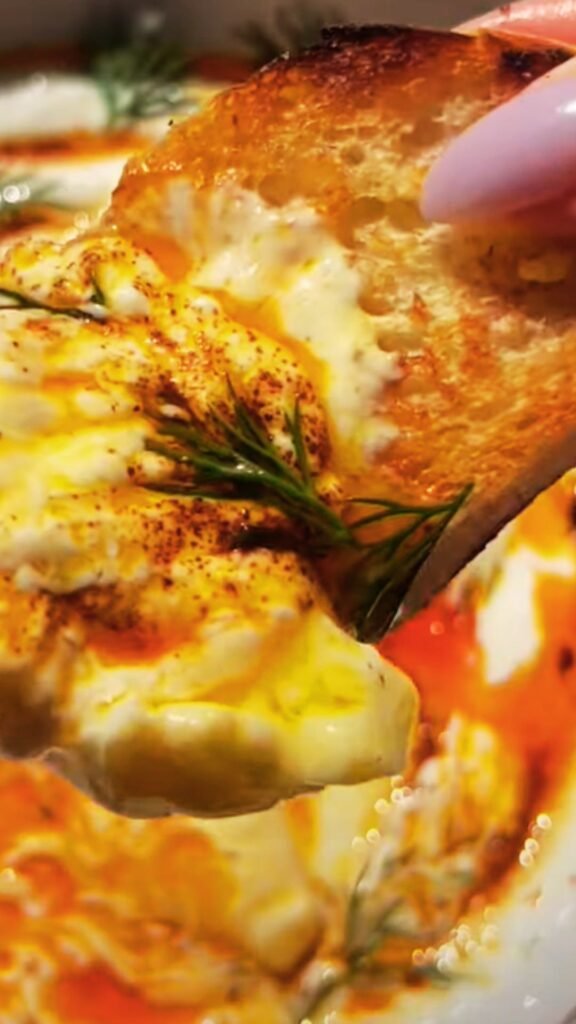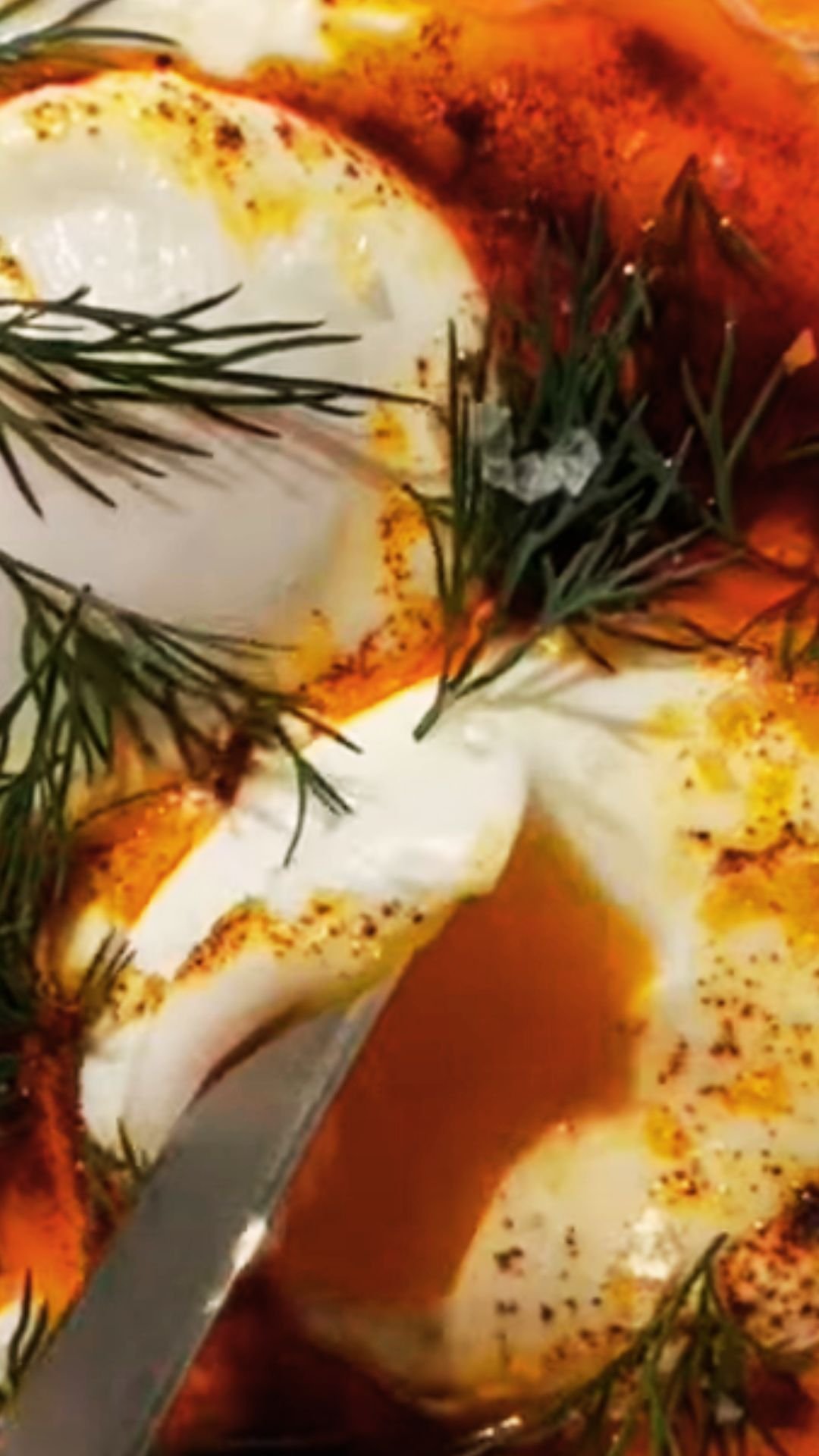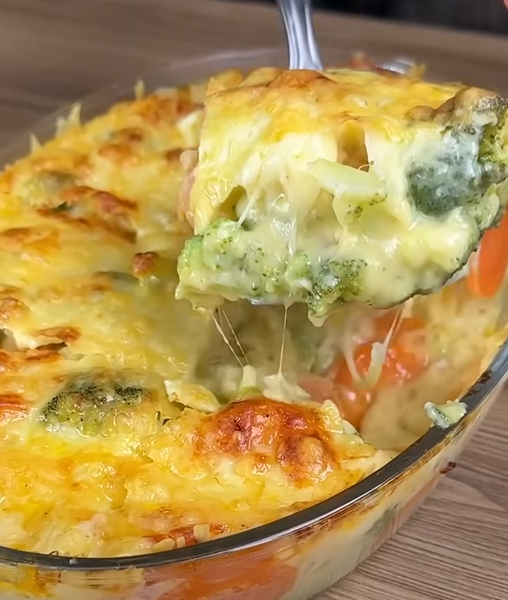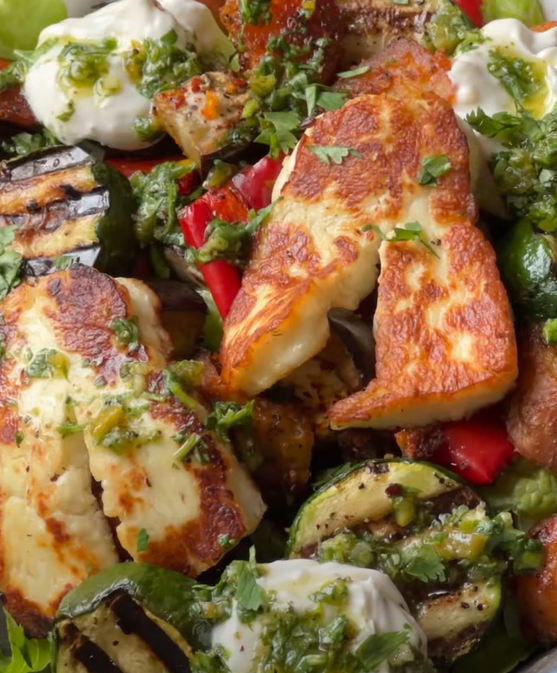When I first encountered Turkish eggs, or Cilbir as it’s authentically known, during my culinary adventures, I was instantly captivated by this seemingly simple yet incredibly sophisticated dish. There’s something magical about the way perfectly poached eggs nestle into a cloud of garlicky yogurt, crowned with a vibrant chili oil that transforms humble ingredients into pure breakfast poetry.
This isn’t just another egg recipe – it’s a centuries-old Ottoman tradition that has graced royal tables and humble kitchens alike. Dating back to the 15th century, there are records of çılbır being eaten by Ottoman sultans, making this dish a true piece of culinary history. What strikes me most about Cilbir is how it embodies the Turkish philosophy of taking simple, quality ingredients and elevating them through technique and tradition.
Understanding Cilbir: More Than Just Eggs and Yogurt
Cilbir: A traditional Turkish breakfast dish consisting of poached eggs served over garlic-infused yogurt and topped with spiced butter or chili oil.
Pul Biber: Also known as Aleppo pepper, this is a moderately spicy Turkish pepper flake that provides the signature warmth and color to the dish.
Simit: Traditional Turkish bread, similar to a bagel, that’s the classic accompaniment to Cilbir.
The beauty of Cilbir lies in its perfect balance of flavors and textures. The cool, tangy yogurt provides a creamy foundation that’s enhanced with the pungent bite of fresh garlic. The silky poached eggs add richness, while the spiced oil brings heat and aromatic complexity. Each component plays a crucial role in creating this harmonious breakfast symphony.
The Cultural Significance of Turkish Eggs
Having spent considerable time exploring Turkish cuisine, I’ve learned that Cilbir represents more than just a meal – it’s a cultural touchstone that connects modern Turkey to its Ottoman heritage. The dish reflects the Turkish mastery of balancing flavors, a skill that has been passed down through generations of home cooks and professional chefs alike.
What fascinates me about this dish is how it demonstrates the Turkish approach to breakfast. Unlike the rushed morning meals common in many Western cultures, Cilbir encourages you to slow down and savor each bite. It’s a dish that demands attention and rewards patience, both in its preparation and consumption.
Essential Ingredients for Perfect Cilbir
Creating authentic Cilbir requires understanding each ingredient’s role and selecting the best quality components. Through my experiments with this recipe, I’ve discovered that the quality of your ingredients directly impacts the final result.
Primary Ingredients Breakdown
| Ingredient | Quantity | Purpose | Quality Tips |
|---|---|---|---|
| Fresh Eggs | 4 large | Protein base, creates silky texture | Use the freshest eggs possible; they hold together better when poaching |
| Greek Yogurt | 1 cup | Creamy foundation, tangy contrast | Full-fat yogurt is essential; low-fat versions are too thin |
| Garlic | 2-3 cloves | Aromatic enhancement | Fresh garlic only; pre-minced lacks the necessary punch |
| Butter | 3 tablespoons | Flavor carrier for spices | European-style butter provides richer taste |
| Pul Biber/Paprika | 1 teaspoon | Heat and color | Aleppo pepper is ideal; sweet paprika with cayenne works as substitute |
| Fresh Dill | 2 tablespoons | Herbal freshness | Chop just before serving to maintain brightness |
| White Vinegar | 1 tablespoon | Poaching aid | Helps egg whites set quickly |
| Salt | To taste | Seasoning balance | Sea salt or kosher salt preferred |
Ingredient Substitutions and Variations
During my recipe development, I’ve discovered several successful substitutions that maintain the dish’s integrity while accommodating different dietary needs and ingredient availability.
Yogurt Alternatives: While traditional Greek yogurt is preferred, I’ve successfully used thick Turkish yogurt, strained regular yogurt, or even high-quality sour cream in a pinch. The key is achieving the right consistency – thick enough to support the eggs without becoming runny when they’re placed on top.
Spice Variations: If you can’t find Pul Biber, I recommend mixing sweet paprika with a pinch of cayenne pepper. Some of my favorite variations include adding sumac for extra tang or incorporating a small amount of cumin for earthiness.
Herb Options: While dill is traditional, I’ve experimented with fresh mint, parsley, and even chives. Each brings its own character to the dish, though dill remains my personal favorite for its bright, distinctive flavor.
Mastering the Art of Poaching Eggs
The success of Cilbir hinges on perfectly poached eggs, and I’ll be honest – this technique intimidated me initially. However, through countless practice sessions and some failed attempts, I’ve developed a foolproof method that consistently produces silky, restaurant-quality results.

My Step-by-Step Poaching Method
- Water Preparation: Fill a deep saucepan with at least 3 inches of water. The depth is crucial – shallow water doesn’t provide enough space for the egg to maintain its shape.
- Temperature Control: Bring the water to a rolling boil, then reduce to a gentle simmer. You want to see small bubbles forming on the bottom of the pan, not aggressive bubbling that will break apart your eggs.
- Acid Addition: Add one tablespoon of white vinegar to the water. This helps the egg whites coagulate quickly, reducing the wispy strands that can make poached eggs look messy.
- Creating the Vortex: Using a spoon, stir the water to create a gentle whirlpool. This technique helps wrap the egg whites around the yolk, creating a neater shape.
- Egg Preparation: Crack each egg into a small bowl or ramekin first. This allows for better control when adding the egg to the water and reduces the chance of breaking the yolk.
- The Drop: Lower the bowl as close to the water surface as possible and gently tip the egg into the center of the vortex.
- Timing: Cook for 3-4 minutes for runny yolks, or 5-6 minutes for firmer yolks. I prefer the 3.5-minute mark for Cilbir – it provides the perfect balance of set whites and flowing yolk.
- Testing: Gently lift the egg with a slotted spoon and lightly touch the yolk. It should feel soft but not liquid.
- Finishing: Transfer the poached egg to a bowl of warm water if you’re not serving immediately, or place directly onto the prepared yogurt base.
Troubleshooting Common Poaching Problems
Through my experience, I’ve encountered and solved most poaching challenges:
Wispy Egg Whites: This usually indicates your water is too hot or you’re not using fresh enough eggs. Reduce the heat and ensure your eggs are as fresh as possible.
Broken Yolks: Often caused by dropping the egg from too high or using a too-vigorous water current. Lower the bowl closer to the water surface and create a gentler vortex.
Uneven Cooking: This typically happens when the water temperature fluctuates. Maintain consistent heat and avoid overcrowding the pan.
Preparing the Garlic Yogurt Base
The yogurt base is where Cilbir’s flavor foundation is built, and getting this component right is crucial for the dish’s success. I’ve refined my technique over time to create a base that’s both stable and flavorful.
Creating the Perfect Yogurt Base
The yogurt mixture should be prepared first, allowing the flavors to meld while you work on other components. I start by bringing my Greek yogurt to room temperature – cold yogurt can cause the hot poached eggs to cool too quickly and create an unpleasant temperature contrast.
Garlic Preparation: I prefer to create a garlic paste rather than simply mincing the cloves. Using the flat side of my knife, I crush the garlic with a pinch of salt, then continue chopping until it forms a smooth paste. This technique releases more of the garlic’s essential oils and creates a more uniform distribution throughout the yogurt.
Seasoning Balance: The yogurt base should be well-seasoned on its own. I add salt gradually, tasting as I go, until the yogurt has a pleasant tanginess that isn’t overwhelmed by the garlic. Fresh cracked black pepper adds a subtle heat that complements the spiced oil topping.
Herb Integration: Fresh dill is folded in just before serving to maintain its bright color and fresh flavor. I’ve learned that adding herbs too early can cause them to lose their vibrancy and become muted.
Yogurt Base Consistency Tips
| Issue | Cause | Solution |
|---|---|---|
| Too Thin | Low-fat yogurt used | Strain through cheesecloth for 30 minutes |
| Too Thick | Over-strained yogurt | Thin with small amount of milk or cream |
| Grainy Texture | Yogurt too cold | Bring to room temperature before mixing |
| Weak Flavor | Insufficient seasoning | Add more salt and garlic gradually |
The Signature Spiced Oil
The crowning glory of any Cilbir is the spiced oil that’s drizzled over the top. This isn’t just a garnish – it’s an integral component that brings heat, color, and aromatic complexity to the dish. I’ve experimented with numerous variations and techniques to perfect this crucial element.
Creating the Perfect Spiced Oil
The key to exceptional spiced oil lies in controlling the temperature and timing. I heat my butter (or olive oil) gently until it’s warm but not smoking. The spices should sizzle gently when added – too hot, and they’ll burn and become bitter; too cool, and they won’t release their essential oils.
Butter vs. Oil: Traditional recipes use butter, which I prefer for its rich flavor and the way it carries the spices. However, olive oil creates a lighter version that some may prefer. I’ve found that a combination of both provides the best flavor profile.
Spice Blooming: Adding the Pul Biber or paprika to the warm fat allows the spices to bloom, releasing their full flavor potential. I let them cook gently for 30-60 seconds, stirring constantly to prevent burning.
Timing: The spiced oil should be drizzled over the assembled dish while still warm. This ensures the aromatic compounds are at their peak and the oil doesn’t solidify on contact with the cool yogurt.
Assembly and Presentation
The final assembly of Cilbir is where all your careful preparation comes together. I’ve learned that presentation isn’t just about aesthetics – the way you assemble the dish affects how the flavors combine with each bite.
My Assembly Method
- Plate Warming: I warm my serving plates slightly – not hot, but just above room temperature. This prevents the yogurt from becoming too cold and helps maintain the overall temperature of the dish.
- Yogurt Spreading: Using the back of a spoon, I spread the garlic yogurt in a shallow well across the plate. The depression helps cradle the poached eggs and contains the spiced oil.
- Egg Placement: The poached eggs are placed gently in the center of the yogurt bed. If the yolks are perfectly runny, they’ll create a gorgeous golden pool when broken.
- Oil Drizzling: The warm spiced oil is drizzled generously over the eggs and yogurt, creating an attractive pattern and ensuring even distribution.
- Final Garnish: A sprinkle of fresh dill and perhaps a light dusting of additional Pul Biber provides the finishing touch.
Serving Suggestions and Accompaniments
Cilbir is traditionally served with Turkish simit, but I’ve found several excellent alternatives that complement the dish beautifully:
Bread Options: Thick-cut sourdough toast, warm pita bread, or crusty artisanal bread all work wonderfully. The key is having something substantial enough to support the creamy mixture while providing textural contrast.
Additional Garnishes: I sometimes add a few pickled vegetables on the side for acidity, or a small salad of fresh herbs and cucumber for crunch.
Temperature Considerations: Everything should be served immediately while the contrasts between the warm oil, room-temperature yogurt, and hot eggs are at their peak.
Nutritional Benefits and Health Considerations
As someone who’s passionate about both flavor and nutrition, I appreciate that Cilbir offers substantial health benefits alongside its incredible taste. This dish provides a well-balanced combination of protein, healthy fats, and probiotics that make it an excellent choice for starting the day.
Nutritional Profile Analysis
| Nutrient | Per Serving | Daily Value % | Health Benefits |
|---|---|---|---|
| Protein | 18-22g | 36-44% | Muscle maintenance, satiety |
| Calcium | 180-220mg | 18-22% | Bone health, muscle function |
| Probiotics | Varies | N/A | Digestive health, immune support |
| Vitamin B12 | 1.2-1.8mcg | 50-75% | Energy metabolism, nerve function |
| Healthy Fats | 15-18g | N/A | Heart health, nutrient absorption |
| Folate | 40-60mcg | 10-15% | Cell division, DNA synthesis |
Protein Quality: The combination of eggs and yogurt provides complete proteins containing all essential amino acids. This makes Cilbir particularly valuable for vegetarians who might struggle to get complete proteins from plant sources alone.
Probiotic Benefits: Greek yogurt contains beneficial bacteria that support digestive health and immune function. I’ve noticed that regular consumption of dishes like Cilbir has positive effects on my overall digestive comfort.
Satiety Factor: The high protein and fat content keeps me satisfied for hours, making this an excellent choice for those practicing intermittent fasting or trying to maintain stable blood sugar levels.
Dietary Modifications
I’ve successfully adapted this recipe for various dietary needs:
Dairy-Free Version: Using coconut yogurt or cashew-based alternatives can work, though the flavor profile changes significantly. I recommend adding extra garlic and herbs to compensate for the reduced tanginess.
Lower Fat Option: While I prefer full-fat yogurt for optimal taste and texture, 2% Greek yogurt can be substituted with minimal impact on the final result.
Keto-Friendly: This dish is naturally very low in carbohydrates and fits perfectly into ketogenic meal plans when served without bread.
Regional Variations and Modern Interpretations
Through my culinary explorations, I’ve discovered that Cilbir has evolved differently across various regions, each adding its own local touch to this classic dish. Understanding these variations has deepened my appreciation for the recipe’s versatility.
Balkan Influences
In several Balkan countries such as Bosnia and Herzegovina and Montenegro, variations of Cilbir exist that incorporate local ingredients and preferences. These versions sometimes include different herbs or spice blends that reflect regional tastes.
Modern Restaurant Interpretations
Contemporary chefs have embraced Cilbir, creating elevated versions that maintain the dish’s essence while adding creative elements. I’ve seen versions that incorporate:
- Truffle Oil: A luxurious addition that adds earthy complexity
- Smoked Paprika: Creating a deeper, more complex flavor profile
- Microgreens: Modern garnishes that add visual appeal and fresh flavors
- Flavored Yogurts: Some chefs experiment with herb-infused or cultured yogurts
International Fusion Approaches
The principles of Cilbir have inspired fusion dishes worldwide:
Mediterranean Fusion: Incorporating sun-dried tomatoes, olives, or feta cheese Middle Eastern Influence: Adding za’atar, sumac, or tahini elements Mexican Inspiration: Using chipotle peppers and lime for heat and acidity
Advanced Techniques and Professional Tips
After years of perfecting my Cilbir technique, I’ve developed several advanced methods that elevate the dish from good to exceptional. These techniques require more attention but produce restaurant-quality results.
Temperature Management
Professional kitchens excel at temperature control, and I’ve learned to apply these principles to home cooking. The key is creating a temperature gradient that enhances the eating experience:
Warm Plates: I place my serving plates in a low oven (200°F) for 2-3 minutes before plating Yogurt Temperature: Bringing the yogurt base to room temperature prevents thermal shock when hot elements are added Oil Temperature: The spiced oil should be warm enough to be aromatic but not so hot that it cooks the yogurt on contact
Texture Refinement
Yogurt Straining: For ultra-smooth yogurt, I sometimes strain it through fine cheesecloth for 15-20 minutes to remove excess whey Garlic Processing: Creating a true garlic paste using a mortar and pestle produces a smoother integration than knife-chopped garlic Oil Infusion: Allowing the spiced oil to rest for 5-10 minutes after preparation lets the flavors meld more completely
Timing Coordination
Professional execution requires coordinating multiple components:
- Prep Phase: Yogurt base prepared and resting
- Oil Phase: Spiced oil prepared and kept warm
- Egg Phase: Poaching timed to coincide with plating
- Assembly Phase: Quick, confident plating while everything is at optimal temperature
Troubleshooting Common Issues
Even experienced cooks encounter challenges with Cilbir. I’ve compiled solutions to the most common problems I’ve encountered and helped others solve.
Problem-Solution Matrix
| Problem | Likely Cause | Solution | Prevention |
|---|---|---|---|
| Runny yogurt base | Low-fat yogurt or excess liquid | Strain through cheesecloth | Use full-fat Greek yogurt |
| Broken poached eggs | Water too hot or old eggs | Lower temperature, fresher eggs | Maintain gentle simmer |
| Bitter spiced oil | Overheated spices | Start over with lower heat | Watch for gentle sizzling |
| Cold final dish | Poor timing coordination | Warm plates, better timing | Prep everything in advance |
| Overwhelming garlic | Too much or raw garlic | Balance with more yogurt | Use garlic paste method |
| Bland overall flavor | Under-seasoned components | Season each component well | Taste and adjust throughout |
Recovery Techniques
When things go wrong, I’ve learned several recovery methods:
Watery Yogurt: Mix in a small amount of cream cheese or strained yogurt to thicken Broken Hollandaise Effect: If the oil separates, re-emulsify by whisking in a small amount of warm water Over-salted Base: Add more yogurt or a touch of honey to balance the saltiness
Meal Planning and Make-Ahead Strategies
While Cilbir is best served fresh, I’ve developed strategies for busy mornings that allow you to enjoy this dish without extensive preparation time.
Component Preparation Timeline
2 Days Ahead: Spice blend can be mixed and stored 1 Day Ahead: Yogurt base can be prepared and refrigerated Morning Of: Poach eggs and prepare spiced oil fresh
Batch Cooking Adaptations
For feeding larger groups, I’ve scaled this recipe successfully:
Yogurt Base: Doubles or triples easily and can be made in advance Spiced Oil: Can be made in larger batches and reheated gently Egg Poaching: Work in batches, keeping finished eggs in warm water
Storage Guidelines
Leftover Components: Yogurt base keeps for 2-3 days refrigerated Spiced Oil: Can be stored for up to a week and reheated Complete Dish: Best consumed immediately; doesn’t store well assembled
Questions and Answers
Q: Can I make Cilbir without poaching the eggs?
While poaching is traditional, I’ve successfully made versions with soft-boiled eggs or even perfectly fried eggs with runny yolks. The key is maintaining that creamy yolk texture that mingles with the yogurt base. Soft-boiled eggs (6-7 minutes) work particularly well as an alternative.
Q: What’s the best substitute for Pul Biber if I can’t find it?
I recommend mixing sweet paprika with a small amount of cayenne pepper. The ratio I use is 3:1 paprika to cayenne, which provides similar heat and color. Smoked paprika adds an interesting dimension, though it changes the flavor profile slightly from the traditional version.
Q: Can I make this dish dairy-free?
Yes, though the result will be quite different. I’ve had success using thick coconut yogurt or cashew-based alternatives. You’ll need to add extra garlic, lemon juice, and salt to compensate for the reduced tanginess. The texture won’t be identical, but it’s still delicious.
Q: How do I prevent the yogurt from becoming watery when I add the hot elements?
The key is using full-fat Greek yogurt at room temperature and ensuring your spiced oil isn’t too hot. I also create a small well in the yogurt to contain the egg, which helps prevent the heat from spreading too quickly through the base.
Q: Can I prepare any components in advance?
The yogurt base can be made up to 24 hours ahead and refrigerated. The spiced oil can be prepared and gently reheated when needed. However, the poached eggs must be made fresh – they don’t reheat well and lose their silky texture.
Q: What’s the traditional bread served with Cilbir?
Traditionally, Cilbir is served with simit, a Turkish bread similar to a bagel. However, any crusty bread that can support the creamy mixture works well. I particularly enjoy thick sourdough toast or warm pita bread.
Q: How can I tell when my poached eggs are perfectly done?
For Cilbir, you want the whites completely set but the yolk still runny. I test by gently lifting the egg with a slotted spoon and lightly touching the yolk – it should feel soft and yielding but not liquid. The timing is typically 3-4 minutes in gently simmering water.
Q: Is it normal for the dish to look slightly messy when the yolk breaks?
Absolutely! The beauty of Cilbir lies in the way the golden yolk mingles with the white yogurt and red oil, creating a marbled effect. This “messy” appearance is actually the sign of a perfectly executed dish where all the components blend harmoniously.
Q: Can I use regular yogurt instead of Greek yogurt?
Regular yogurt is too thin for this application and will become watery when the hot elements are added. If you only have regular yogurt, strain it through cheesecloth for several hours to remove excess whey and achieve a thicker consistency similar to Greek yogurt.
Q: What wine or beverage pairs well with Cilbir?
For non-alcoholic options, I recommend Turkish tea (çay), strong coffee, or fresh mint tea. The slight bitterness of these beverages complements the rich, creamy elements of the dish. Fresh orange juice also provides a nice acidic contrast to the richness of the eggs and yogurt.
Turkish Eggs (Cilbir) represents everything I love about authentic cuisine – it’s deeply rooted in tradition yet accessible to modern home cooks. The dish teaches us that extraordinary flavors don’t require exotic ingredients, just careful attention to technique and quality components. Every time I prepare Cilbir, I’m reminded of the Ottoman sultans who enjoyed this same combination of flavors centuries ago, connecting us to a rich culinary heritage that continues to bring joy to breakfast tables around the world.
Whether you’re looking to expand your breakfast repertoire or seeking a satisfying meal that bridges cultures and centuries, Cilbir offers an experience that nourishes both body and soul. The perfect balance of protein, probiotics, and bold flavors makes it as nutritious as it is delicious, proving that the best dishes often come from the simplest origins.


